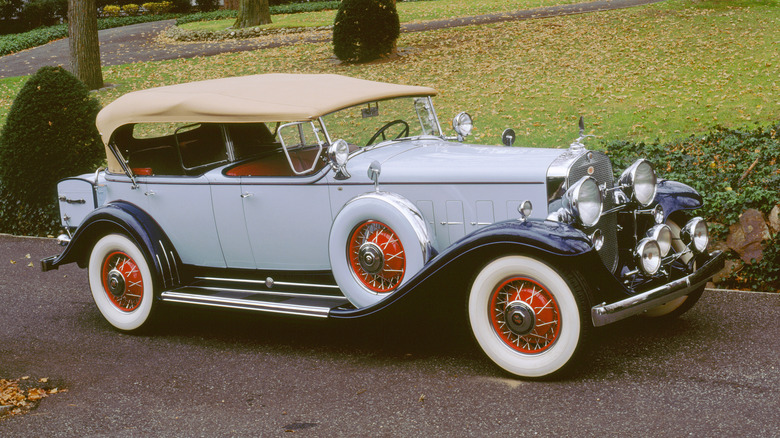The First Production Car Powered By A V12 Engine (And No, It's Not An Italian Exotic)
Thanks to the efforts of Enzo Ferrari and his contemporaries, the V12 engine is closely associated with Italian supercars in the minds of many enthusiasts. However, the Italians were relatively late to the party, with the first V12-powered production cars arriving several decades earlier in the 1910s. A few American automakers began designing V12 engines for road cars around that time, but the first production car to feature such an engine is considered to be the Packard Twin Six. It was launched in May 1915 for the 1916 model year, and churned out 88 horsepower. Most sources say this initial engine was 424 cubic inches, or 7.0 liters, in displacement.
The Twin Six proved to be a success for Packard and would end up becoming the sole model in its lineup for around half a decade after its launch. Exceptionally wealthy clients could also enlist a coachbuilder to create custom bodywork for the car, such as the Ormonde Roadster pictured above, which appeared at a Bonhams auction in 2015. Packard sold six to eight times more Twin Sixes than its competitors at the height of its popularity, even though Packard was far from the only American luxury carmaker to offer a V12 engine.
Packard's V12-powered competitors
Although Packard's Twin Six takes the crown for having the first production V12 engine, several of its American rivals weren't far behind. Enger launched its first V12-powered car a few months after Packard. Enger's V12 car was far cheaper than a Twin Six, although it wasn't as powerful. Weidely, an engine builder, also unveiled a V12 at around the same time, and it would go on to be used in production cars from various auto manufacturers, including the Kissel Double Six.
However, none of these rivals could match the popularity of Packard's Twin Six. Eventually, these rival manufacturers would end production of their V12-powered models, leaving Packard as the sole V12 manufacturer by the early 1920s. Despite carving out a niche for itself, Packard decided not to release a direct replacement for the Twin Six, instead debuting its Single Eight successor in 1923. For a few years, the production of V12 engines would then be paused, with Packard committing to its eight-cylinder engines and other manufacturers unwilling to take the plunge and develop a twelve-cylinder of their own.
That changed in 1931, when Cadillac unveiled a V12-powered car, the Cadillac Fleetwood, just a year after launching the iconic V16-powered Cadillac Series 452. This V12 borrowed design elements from the V16, including a four-inch stroke and 45-degree V-angle. Packard unveiled a revived Twin Six the following year, while other competitors, including Lincoln and Pierce-Arrow, also developed their own versions of the V12 engine.
The Italian connection
Throughout the 1930s, several V12-powered American cars came and went, but it was the Lincoln-Zephyr V12 of 1936 that proved to be the most long-lasting. It remained in production even as the U.S. entered the Second World War, and was only discontinued in 1948. By that time, though, an Italian race team owner by the name of Enzo Ferrari had commissioned a V12 engine that would help shape his eponymous brand into the icon that it is today.
However, the idea of building a V12 engine in Italy is attributed not to Ferrari, but instead to engine designer Gioacchino Colombo. It was reportedly Colombo who suggested the idea of building a twelve-cylinder engine to Ferrari, rather than the other way around. Ferrari agreed, reportedly in part because he'd seen firsthand how impressive American officials' Packard Twin Sixes were during the First World War.
Colombo then set to work designing the V12 engine that would come to bear his name. The first car to feature the new engine was the 1947 Ferrari 125 S, and the success of this initial car and its successors would help launch Ferrari's name into the global automotive world and Colombo's engine to legendary status. And so, the Colombo V12 remains one of the most famous V12 engines ever built, even if Packard takes credit for both building the first example and convincing Enzo Ferrari to build his own.


